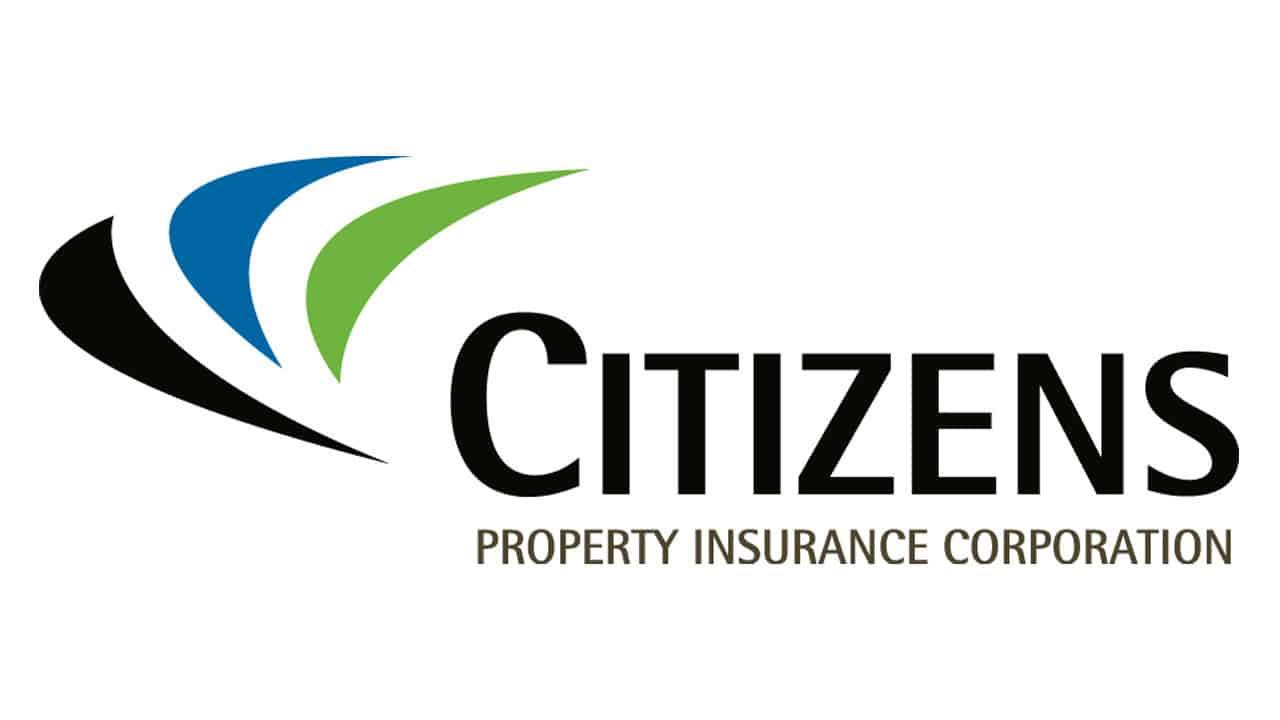Florida Citizens staff call on Board to publicly support risk transfer

The staff of Florida’s Citizens Property Insurance Corporation have published a white paper calling on the Board of the insurer of last resort to publicly support a plan to procure risk transfer, through reinsurance and catastrophe bonds, for 2022.
The move comes after the Board of Florida Citizens requested at a December meeting that a review comparing the costs and efficacy of of risk transfer versus other pre-event financing mechanisms be undertaken, to explore how money could be saved.
Driving this review, are the evident higher reinsurance costs after some years of hardening, as well as an understanding that pre-event bonding could be quite cost-effectively achieved at this time.
When we last covered Florida Citizens it was right after that December meeting, when it became clear that rapid growth in premiums written and so exposure were set to drive an increasing need for financing, presumably driving a need for more risk transfer, reinsurance and potentially catastrophe bonds.
As the Citizens Board was keen to explore all financing avenues, including pre-event financing such as debt and revenue bonds, to see whether using a mix of instruments could bring down costs in 2022, the staff of the insurer prepared a white paper to explain the ramifications of different funding choices.
The white paper explains the need for a certain level of claims paying ability to Florida Citizens and that reinsurance and other forms of risk transfer such as catastrophe bonds can play an important role in this.
A significant concern is the lack of Board support, currently, for buying reinsurance and related risk transfer in 2022, which the staff explained could send the wrong signals to the market.
Staff explained that there is no “apples to apples” comparison when it comes to reinsurance, as other sources of financing such as pre-event bonds need to be repaid or refinanced with post-event bonds, if a major hurricane loss caused them to be utilised.
A letter from Citizens CEO Barry Gilway and CFO Jennifer Montero explained to the Board members that, “Due to the public nature of Citizens’ Board of Governors meetings and the discussion surrounding Citizens’ participation in the risk transfer market, there is some uncertainty in the reinsurance marketplace concerning Citizens’ risk transfer strategy for 2022 that, if left unresolved, could negatively impact Citizens’ risk transfer rates, capacity, and financial position as well as the financial position of the State of Florida should a catastrophic event, or series of events, occur in Florida.”
Meaning that, “Public affirmation of the Board’s support of Citizens’ proposed risk transfer strategy for 2022 is critical to address any potential uncertainty or confusion of Citizens’ intent to purchase reinsurance for the 2022 hurricane season.”
It’s proposed that a special Board meeting be held at which the subject of risk transfer can be discussed and a public direction be given as to Citizens intentions related to procuring risk transfer for 2022, which would then give the staff time to structure, market and place a risk transfer program in advance of the hurricane season.
Right now, Citizens staff aim to procure reinsurance, or alternative risk transfer such as catastrophe bonds, in order to cover a projected 1-in-100 year probable maximum loss.
Part of the issue and what has drive the Board to request a review, is the fact that 100-year PML figure rises alongside Citizens exposure levels and with premiums written projected to continue rising fast, it seems more reinsurance would have been required.
Prior to the December meeting, Citizens staff said that their discussions with the reinsurance market suggested that procuring sufficient reinsurance and risk transfer for 2022 at efficient rates would be possible.
In addition, pre-event bonding before the hurricane season is also possible, the staff explained.
But they caution that, “While pre-event bonds and reinsurance both improve Citizens’ liquidity position, they are not comparable from a capital structure perspective as they serve separate purposes within Citizens’ claims-paying structure.”
Reinsurance is “pure risk transfer in the event of a storm”, Citizens staff highlighted, while bonding if utilised for claims payment purposes either needs to be repaid, or replenished through additional post-event bond issues.
Reinsurance and catastrophe bonds do not need to be paid back if triggered, making them a viable contingent capital source.
Reinsurance costs are significantly higher though this year.
While Citizens average average annual risk transfer costs, from 2017 through 2021, were around $276 million for FHCF, private reinsurance, and cat bonds, this provided an average annual coverage amount of approximately $3.9 billion for an average rate-on-line of approximately 7.2%.
But, “Citizens’ budgeted risk transfer program for 2022 includes risk transfer costs of approximately $722 million for FHCF, private reinsurance, and cat bonds, and a coverage amount of $8.9 billion for an average rate-on-line of approximately 8.1%,” the staff’s whitepaper explained.
However, Citizens average direct premium written was $1.1 billion through 2017 to 2021, while in 2022 this is projected to be $3 billion, which of course means more risk transfer would be required.
Importantly the staff wrote, “Citizens’ participation in the risk transfer markets reduces the potential assessments that result from losses reducing or exhausting Citizens’ surplus and FHCF coverage and provide resources for multiple events and/or for multiple years. Without reinsurance, Citizens would only be able to pay claims from its surplus and FHCF coverage, which significantly increases the probability of state-wide assessments on Florida residents and not just Citizens’ policyholders.”
Adding, “Risk transfer has the benefit after an event (as noted above) of providing significant claims-paying capacity and relieving a broad base of state-wide insurance policyholders from the burden of assessments at the worst possible times. Emergency assessments are levied on Florida residents who have no direct relation to Citizens or in some cases are not even aware of Citizens as they do not own a home.”
A key advantage of reinsurance and catastrophe bonds is that, when activated and recovered from they do not need a repayment.
In addition, the costs of risk transfer are ultimately paid by the persons who directly benefit from it, the policyholders, while assessments are often viewed as unfair and inequitable.
Importantly, reinsurance also protects accumulated surplus for Citizens, which means after a major hurricane event the insurer comes out the other side in a far better position and this greatly reduces the need for emergency assessments as well.
However, on the negative side, reinsurance costs remain even when it has not been triggered and this is always a key consideration for Board’s in these discussions, while reinsurance also needs to be renewed and its pricing is subject to swings depending on market conditions.
Pre-event bonds, on the other hand, can allow for long-term locking in of rates and right now market conditions are conducive, while they also offer sustainable financing and liquidity.
But they need to be refinanced after a disaster occurs and emergency assessments may be used for this, while surplus can be impacted if a run of challenging hurricane seasons occurred.
“Ultimately, post-event bonding will result in placing a cost on insurance lines of business that are used to subsidize Citizens’ policyholders. This has been viewed as an unfair “hurricane tax.” Excessive emergency assessments can operate as a drain on Florida’s economy at the worst possible time (after a large event or multiple events),” the staff’s whitepaper explains.
There are also structural considerations, as pre-event bonds need to be issued for each of Citizens accounts. Reinsurance and catastrophe bonds can perhaps also be better tailored to suit the evolution of Citizens exposure.
Perhaps the most critical finding in the whitepaper though, is that without reinsurance a 1-in-100 year hurricane could “completely eliminate all of Citizens’ surplus in the Coastal Account and PLA and would require a total of approximately $1.9 billion of surcharges and assessments – approximately $447 million of surcharges on Citizens’ policyholders and approximately $1.5 billion of assessments on Florida residents.”
In addition, back to back 1-in-50 year hurricanes could also leave Citizens in a difficult position, with even higher assessments needing to be made.
Conversely, if the proposed risk transfer is purchased for 2022, no assessments would need to be levied on Florida residents in the event of a 1-in-100 year storm.
“The results of this analysis illustrates the importance of Citizens’ capital structure through its proposed risk transfer program and surplus preservation for Citizens to ensure that state-wide insurance policyholders are not subsidizing Citizens’ policyholders through the levying of assessments after an event,” the whitepaper concludes.
The staff suggest the scenarios and potential for assessments be shared with Florida’s leadership and state that there could be “severe potential implications of making decisions that could have significant impacts on Citizens’ capital structure and the state’s ratings.”
Making the right risk management and risk transfer decisions can not only protect Citizens’ financial position, but the financial position of Florida as well. With this information the staff are hoping to further educate the Citizens Board and drive a clear decision to inform the need for risk transfer in 2022.
Importantly, the reinsurance market and catastrophe bond investors will be looking for clear direction as well, hence the staff’s explanation that public affirmation of Citizens’ risk transfer strategy is key, to give the market confidence.
The risk transfer budget requested for 2022 was entered as a placeholder in the Board meeting documents in December at $400 million, which was around 60% up on the prior year.
But with exposure, in terms of premiums, looking set to rise to levels almost three-times the 2017 to 2021 average later this year, these higher costs are to be expected.
It is now up to the Board to decide on the efficacy of risk transfer versus pre-event and inevitable post-event bonding or financing, with the staff hoping for a decision sooner than later in order to give the market confidence.
Alongside this, a renewed strategy for depopulation is also likely to be a key consideration, as Citizens will also be seeking to downsize its risk portfolio over the coming years.
Also read:
Florida Citizens reinsurance & cat bond budget hiked ~60% for 2022.
Florida market “unsustainable”, reinsurance rates to increase in 2022: Citizens CEO.
Florida Citizens growth could near previous highs. Depopulation in focus.







